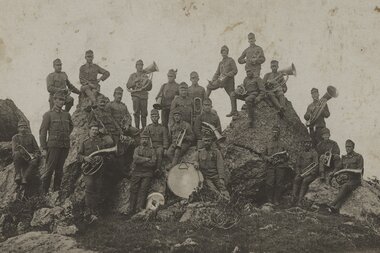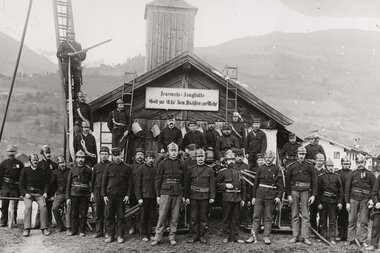Short story of Niedernsill
IN 963
In 963 the district of Lengdorf (Lengindorf) is mentioned in a document, and in the 12th century the Niedernsill properties appear in deeds of transfer as the property of St Peter of Salzburg. The name Niedernsill is first mentioned around 1140 as "Nidrinseli". In Old High German, "Seli" means "dwelling" and Niedernsill is thus the lowest settlement in the upper Pinzgau district. In dialect our villag is called "Nidansöi".
On the Birgkögei, at the entrance to the Mühlbachtal valley, the remains of a medieval castle have been found, as have the remains of the walls of Radensbach Castle above Aisdorf. In our Tauern valleys (Mühlbachtal and Rattensbachtal) prehistoric finds have been made which indicate mule tracks from Roman times.
IN 1409
In 1409 the church of Niedernsill was mentioned in a document and St Lucia was nemed as the patron saint in a letter of indulgence. The present church was rebuilt before 1872 and consecrated in 1822, having been severely damaged by a flood in 1798 and a fire in 1877. With the founding of the Horse Breeding Association in 1898, Niedernsill officially became the centre of Noriker breeding in the upper Pinzgau.
In 1963 the village celebrated its 1000th anniversary with a big festival.
THE COAT OF ARMS
Description of the arms of Niedernsill, awarded in 1963: Gold divided over black, above a growing black horse's trunk, below seven golden bell towers. The horse refers to Niedernsill as the centre of horse breeding in the Pinzgau region, while the bell towers represent the villages of Kirchdorf, Jesdorf, Aisdorf, Lengdorf, Steindorf, Gaisbichl and Ematen, which make up the municipality of Niedernsill.
SHORT DESCRIPTION OF NIEDERNSILL
The municipality has an area of 56.51 km2 and is situated in the Salzach valley at an altitude of 769 m above sea level between the Grasberge mountains in the north and the Hohe Tauern mountains in the south. Niedernsill currently has a population of around 2,800 and is situated in one of the most beautiful areas of Austria, making it a very centrally located holiday resort.
Relaxation seekers, mounaineers, hikers and those interested in culture will all feel at home in the densely forested mountains of upper Pinzgau.










